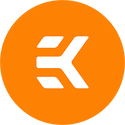
EVGA Introduces Z370 Series Motherboards
EVGA has announced three new enthusiast motherboards based on Intel's Z370 Express chipset. These boards support Intel's brand new eighth generation processors, including the powerful i7 8700K. All three boards feature metal-reinforced PCI Express and memory slots, NVIDIA SLI support, and M.2 slots. Also included are Gigabit NICs from either Intel or Killer, multiple headers for RGB lighting, and unique cutouts in the boards to make cable routing easier.
The Z370 Series comes in three models: the full ATX Z370 Classified K and Z370 FTW, and the Z370 Micro in the micro ATX form factor. All three are clad in a black and gray color scheme, leaving color accents and lighting styles up to the user. VRM and southbridge heat sinks will keep overclocked systems cool, with the two larger boards sporting gray heat sink and I/O covers with RGB lighting that can be synced with the onboard headers. All three boards have 100% solid state capacitors, and DUAL switchable onboard BIOS chips, which should make for hassle-free overclocking.
The Z370 Series comes in three models: the full ATX Z370 Classified K and Z370 FTW, and the Z370 Micro in the micro ATX form factor. All three are clad in a black and gray color scheme, leaving color accents and lighting styles up to the user. VRM and southbridge heat sinks will keep overclocked systems cool, with the two larger boards sporting gray heat sink and I/O covers with RGB lighting that can be synced with the onboard headers. All three boards have 100% solid state capacitors, and DUAL switchable onboard BIOS chips, which should make for hassle-free overclocking.











































































